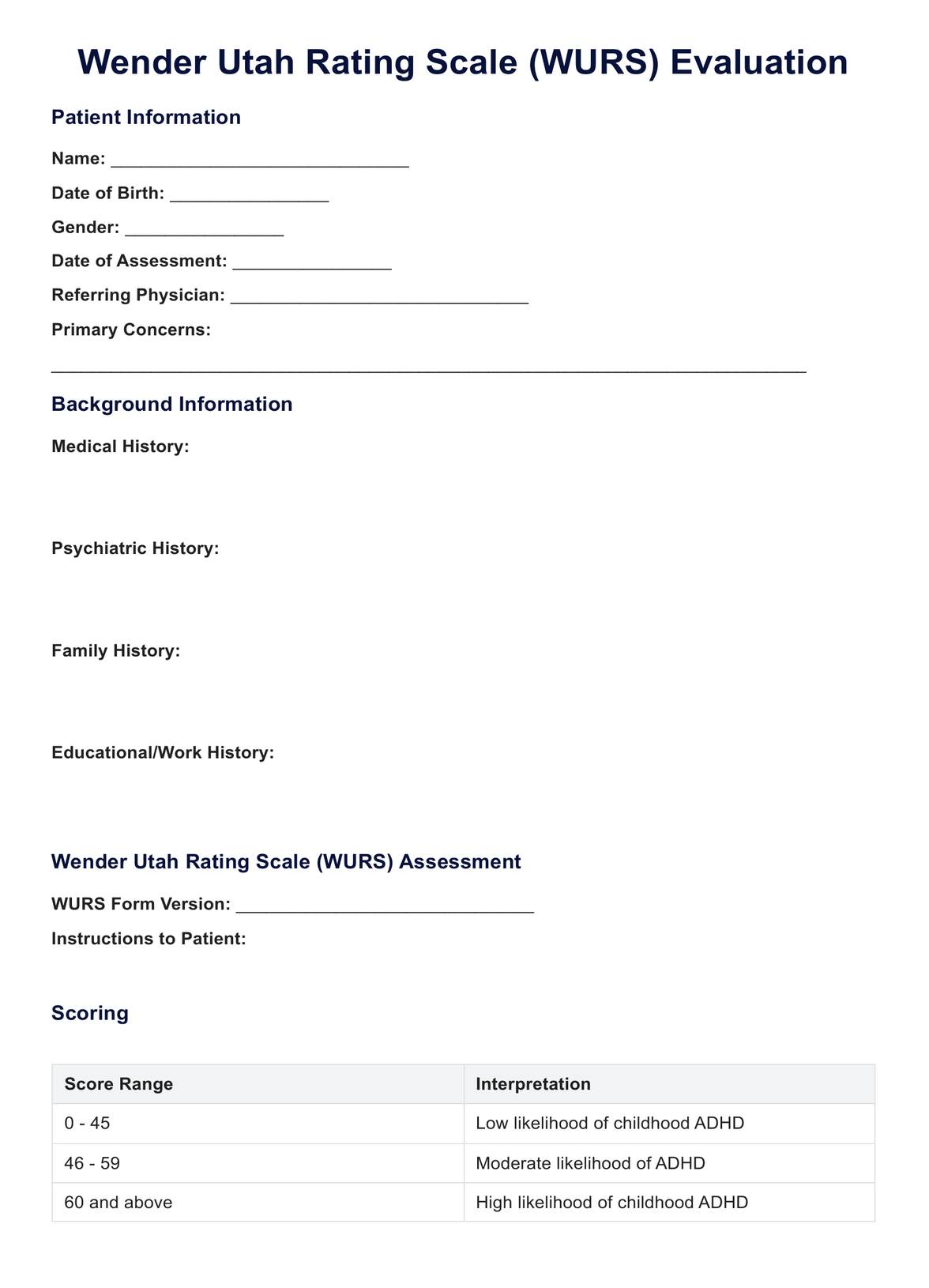The scale is a self-report questionnaire comprising questions about childhood behaviors used to assess the likelihood of attention deficit hyperactivity disorder (ADHD) in adults.

Wender Utah Rating Scale
Unlock the insights of ADHD in adults with our Wender Utah Rating Scale guide – a comprehensive resource for accurate retrospective diagnosis.
Use Template
Wender Utah Rating Scale Template
Commonly asked questions
The cutoff for the scale is typically set at a score of 46 or higher. Scores at or above this threshold indicate a likelihood of ADHD.
The scoring of the scale involves assessing responses to various questions related to childhood symptoms. A total score is calculated, and a cutoff of 46 or higher is used for ADHD likelihood.
EHR and practice management software
Get started for free
*No credit card required
Free
$0/usd
Unlimited clients
Telehealth
1GB of storage
Client portal text
Automated billing and online payments











